

A Shrine for the Pursuit of Learning
|
One of the most well-known places in Fukuoka Prefecture is probably Dazaifu Tenmangu. Located less than an hour from the heart of Fukuoka and with a history of over 1,100 years, it is one of the most important Tenmangu shrines in Japan dedicated to Michizane Sugawara. There are over 12,000 shrines across Japan dedicated to this historical figure, who was a scholar and politician of the Heian period. Nowadays, he is often associated as a god of learning, as he is recognised as one of the most renowned scholars in Japanese history. Many students often visit and pray at these shrines during exam periods.
Dazaifu Tenmangu in particular, is built on the burial site of Michizane Sugawara. Following his death in 903 after being exiled to Dazaifu, a number of natural disasters fell upon Japan. This led people to believe that the disasters were caused by his restless spirit, due to the injustice he was subjected to because of his rising prominence and the fierce rivalry with the Fujiwara clan. Thus, the shrine was built in order to appease his spirit. The current main hall is actually a reconstruction of an earlier version, and was built in 1591. Moreover, Dazaifu Tenmangu is famous for its 6,000 plum trees donated from all over Japan, and they usually bloom from late February to mid-March. This includes the most famous plum tree called Tobiume (flying plum tree). Michizane Sugawara was fond of plum trees and it is said that his first poem, composed when he was five years old, was about plum blossoms. Legend has it that this particular tree flew from Kyoto to Dazaifu in order to accompany him into exile. Besides plum blossoms, visitors can also look forward to seasonal cherry blossoms, irises and chrysanthemums. The shrine is also known for some 100 camphor trees with the oldest one being over 1,500 years old, as well as its autumn foliage. You will also find around 10 ox statues, and this is related to another legend. Apparently when Michizane Sugawara passed away, the ox refused to pull the carriage which carried his body. Thus it was seen as Michizane Sugawara’s wish to be buried there. It is believed that when you rub the head of the ox statue, you will become wiser. At the shrine, good luck charms related to education are the most popular. One can also see a large number of ema (wooden plaque) charms during the exam period, on which visitors write their wish and hang it around the shrine’s display spaces. Throughout the year, a variety of festivals are held at the shrine. One of Japan’s major fire festivals, the Onisube festival, is held annually since 986 on 7 January, with the significance of warding off evil. Huge straw bundles are lit with a fire and the smoke is fanned into the hall, to drive out people dressed up as ogres. Another interesting festival takes place on the first Sunday in March, when plum blossoms are flowering. Re-enacting the Japanese nobility from Heian period, people attempt to compose a poem before a floating cup of sake on a stream reaches them. September sees Dazaifu Tenmangu’s Grand Procession of Michizane Sugawara that dates back to 1101. Held on 22 and 23 September, participants carry a portable shrine that houses the spirit of Michizane Sugawara in this elaborate parade. Major renovations are planned for the main hall of Dazaifu Tenmangu starting from May 2023. Such major renovations last took place around 124 years ago, and the upcoming revamp is estimated to last for 3 years. If you plan to visit Fukuoka Prefecture soon, you will still be able to visit the main hall till then. Otherwise, a temporary hall will be erected from February to May 2023, so that people may visit there instead during the renovation period. |
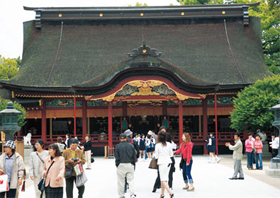 © Web Japan 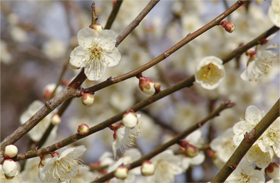 © amanaimages Inc. 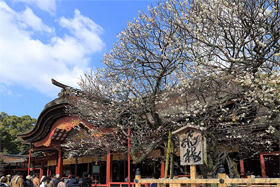 © PIXTA 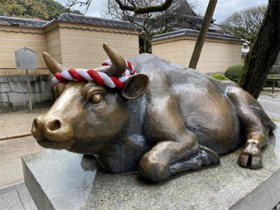 © photoAC 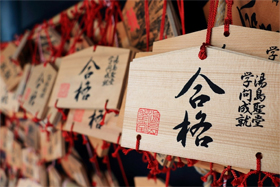 © Japan Up Close 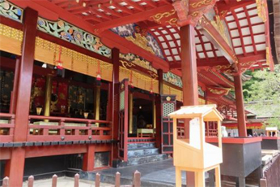 © photoAC |
Resources
|
“Dazaifu Tenmangu – A Sanctuary for Learning, Culture, and the Arts”. 2022. Dazaifu-Tenmangu. Accessed 16 December. https://www.dazaifutenmangu.or.jp/en/. “Dazaifu Tenmangu Shrine”. 2022. Kyushu Tourism Organization. Accessed 16 December. https://www.visit-kyushu.com/en/spots/dazaifu-tenmangu-shrine/. “Dazaifu Tenmangu Shrine”. 2022. JNTO. Accessed 16 December. https://www.japan.travel/en/spot/798/. “Dazaifu Tenmangu Shrine”. 2021. japan-guide.com. https://www.japan-guide.com/e/e4851.html. “Fukuoka’s Famous Shrine, Dazaifu Tenmangu – A Complete Guide”. 2018. MATCHA. https://matcha-jp.com/en/1303. |
|
Japan Creative Centre 4 Nassim Road, Singapore 258372 +65 6737 0434 / jcc@sn.mofa.go.jp https://www.sg.emb-japan.go.jp/JCC/ Nearest parking at Orchard Hotel & Delphi Orchard |
 |